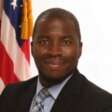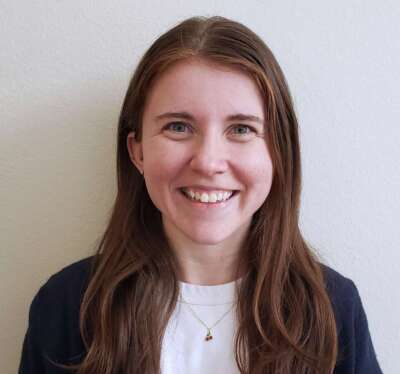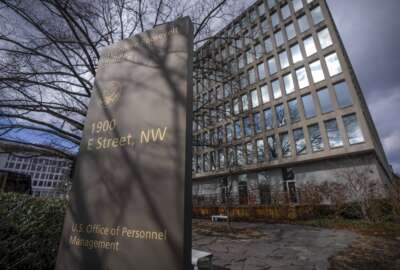Workplace Reimagined 2023: HHS’ Bob Leavitt, Jeffery Anoka on recruiting the future federal workforce
Through process changes, technology adoption and continued efforts to be flexible, Health and Human Services has cut its time to hire by 50%. But CHCO Bob Leavitt...
The federal government is always hiring, but even in just the past few years, agencies have had to rapidly adapt their recruitment strategies to better align with expectations of both current employees and job applicants.
For Bob Leavitt, chief human capital officer at the Department of Health and Human Services, bolstering recruitment strategies demands that HHS not just maintain flexibility, but increase it.
“Flexibility has been absolutely critical for our ability to hire — in terms of how we reach the talent pool, how we help strategically recruit, how we hire and how we onboard staff,” Leavitt told Federal News Network during Workplace Reimagined 2023. “We have streamlined a lot of our workflows and processes for actually reaching out to, hiring and onboarding staff and talent for the department.”
But to manage evolving expectations and practices, hiring has to be a shared responsibility too — it’s no longer just the onus of agency hiring managers, Leavitt said. Using subject matter experts (SMEs) to improve internal hiring, for instance, as well as working with other agencies to take advantage of shared hiring certificates, can help ease the often-challenging federal recruitment process.
“As HR professionals, we are wonderful and super talented, but we don’t always know what it takes to be an emergency room physician or a bedside nurse,” said Jeffery Anoka, deputy CHCO at HHS. “Being able to tap into subject matter experts to help drive those reviews of candidates has been very helpful.”
Although these evolving hiring strategies offer benefits, they can also present their own sets of challenges for HR employees and the department more broadly. For example, the time and resources it takes to involve SMEs in the hiring process has proved a crucial challenge, but one that Leavitt and Anoka are working to overcome.
“We look at our process to see what things we can modify,” Anoka said. “We’ve coordinated very effectively with our security office, for example, on a pilot that we’re going to be launching to help streamline the onboarding process. Once a selection is made … we’re looking at trying to bring that time [to the start date] down. We’re aware that we’re all busy, but looking at chipping away at the process will help us continue to move the dial on time to hire.”
Despite the challenges, finding ways to streamline processes has already reaped some major benefits for HHS, reducing the department’s time to hire by approximately 50%, with bigger reductions likely down the road, Leavitt said.
Remaining human-centered amid rapidly evolving hiring technology
HHS has approximately 90,000 employees, managed through 10 HR centers across the department. And on any given day, HHS has approximately 74,000 resumes available across approximately 3,300 open positions. Managing recruitment among that vast of a workforce requires automated, streamlined processes.
But for Leavitt and Anoka, focusing on a human approach in recruitment is still essential.
“There is a misnomer that people apply and [their application] goes into a black hole, and maybe some computers are coming up with the suggestions on who gets to the hiring manager,” Anoka said. “Misnomer indeed.”
To handle the massive amount of data, HHS employs about 1,200 HR professionals who review and rank applicants based on qualifying criteria in job announcements. Still, using technology to streamline recruitment is essential, and HHS is even looking at new and evolving avenues to improve hiring, such as introducing the use of artificial intelligence.
50%
Percentage reduction in time to hire at HHS, driven by workflow and process changes
SOURCE: Office of the CHCO, Health and Human Services Department
“Just like everyone else, it’s critical for us to be able to have the opportunity to load in some information that we can then have as search criteria and that it can feed us resumes or information that come with that criteria,” Anoka said. “It doesn’t mean that the human element is taken out of it. In fact, it calls for more use of the human element, but it gives us a chance to be able to streamline processes.”
Additionally, there must always be the recognition that enhancements don’t happen without setting the right groundwork at the forefront, they both said.
It often comes down to the basics of reimagining, rethinking and simplifying workflows so that workflows align with any new tool that comes into play, Leavitt said.
“There are no silver bullets out there. It’s a lot of work,” Leavitt said. “But we always have to go back to the basics of rethinking our workflows in many cases and keeping it human-centered.”
Focusing on diverse, early-career talent at HHS
Right now, HHS is particularly eyeing recruitment of acquisition professionals, data scientists and grants experts, but at the same time, the department aims to keep the age and diversity of its workforce front of mind. HHS’ current workforce is on the older end, and like many federal agencies, the department has a major need for early-career talent.
“We’re focusing on strategic recruitment — not the ‘post-and-pray’ of yesterday. How do we engage a passive candidate who doesn’t know that HHS is where they need to be?” Anoka said. “Being able to build to have that pipeline of next generation talent is critical for us.”
Partnering with the Office of Personnel Management and with other agencies to coordinate hiring efforts will ultimately aid HHS in reaching quality candidates in critical occupations, Anoka added.
HHS is also trying to diversify outreach on the front end to try to broaden applicant pools. For example, the department is partnering with more minority-serving institutions and tribal colleges to build awareness of career paths available. Plus, HHS is offering more fellowships, as well as recruiting through the Pathways Program, to bring in early-career talent.
The goal of these strategies is to eventually transform temporary, younger workers into full-time feds. For instance, earlier this year, HHS’ Administration for Children and Families used targeted outreach when hiring about 50 interns for the summer. And now, ACF is looking to extend some of those internships and even make some of the interns permanent employees.
“HHS, like most organizations, can do better as it relates to our diversity numbers,” Anoka said. “We continue to push the envelope on outreach and engagement, making sure that we’re targeting institutions that normally we haven’t engaged, making sure that we are giving consideration to how that outreach aligns with some of our mission-critical occupations we always have a need for.”
Empowering HR professionals within HHS
Regardless of the position that HHS is hiring for, Leavitt said recruitment is ultimately a team sport — it involves everyone, not just HR workers, and not even just SMEs.
“We’re looking at our policies, we’re looking at procedures, we’re calling colleagues in to help us co-create the procedures and policies of the future,” Anoka said. “We’re looking around every corner to see how we can improve in this space.”
But, Leavitt added, investing in HR offices and recognizing their work remains a crucial part of reaching that next level of hiring too.
“The HR cadre of the public sector … has done an extraordinary job moving us forward through the pandemic and into the future,” Leavitt said. “It’s our responsibility to be supporting and investing in our federal HR workforce. Whether it is through advancing learning and growth, or advancing professional development opportunities, we have to be supporting and investing in the workforce that helps move forward our mission.”
To watch and read more from 2023 Workplace Reimagined, visit our event page.
Copyright © 2024 Federal News Network. All rights reserved. This website is not intended for users located within the European Economic Area.
Related Stories
Here are the key tech, workforce provisions in the 2025 intel authorization bill
Featured speakers
-

Bob Leavitt
Chief Human Capital Officer, Health and Human Services Department
-

Jeffery Anoka
Deputy Chief Human Capital Officer, Health and Human Services Department
-

Drew Friedman
Reporter, Federal News Network
Upcoming Events
Related Stories
Top Stories

Bob Leavitt
Chief Human Capital Officer, Health and Human Services Department

Jeffery Anoka
Deputy Chief Human Capital Officer, Health and Human Services Department

Drew Friedman
Reporter, Federal News Network
Drew Friedman is Federal News Network’s reporter covering workforce, pay and benefits. She previously worked as a producer for the program Government Matters at WJLA-TV, covering the business of the federal government. Drew graduated from the University of Virginia in 2018 with a B.A. in media studies.






